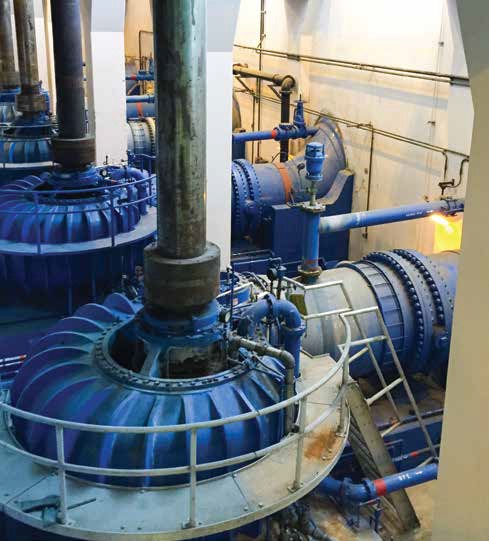By Stephanie Matas
With a humble beginning as an engineer, he steadily rose through ranks of management, epitomizing the essential qualities of a leader. Shorts is welcomed as one of the Steering Committee members for the Fugitive Emissions Summit Americas Conference this year.
Completing his degree in Geological Engineering with a major in Environmental Engineering, Shorts was part of Canada’s first environmental engineering program at Queen’s University. “My initial jump into the fluid sealing space was lucrative as there were so many opportunities available.” Shorts was almost immediately hired by Durabla Canada after completing a two-week contract, which quickly turned into over 23 years. “The timing was right and allowed me to be involved in the evolution taking place in the gasket industry from the very start. It has been an important transition for me leading our business through these changes.”

In his career, Shorts has witnessed the transition from asbestos to non-asbestos products in the fugitive emission space. “In the beginning our company was heavily invested in gaskets for asbestos applications. Back then, asbestos gaskets were considered a great universal fix for everything but that soon began to fizzle out with the increased focus on health and safety.” He reflected how the shift to non-asbestos products shifted the global sealing environment as, “gasket replacements were no longer ‘one-size-fits-all’.” Shorts says there has not necessarily been new gaskets created in recent years, but there has been a huge outpouring of different configurations of existing products, and improved assembly methods to get tighter sealing compositions. He also noted advancements in testing technologies, as many have increased the safety of workers exponentially by eliminating the need for an operator to be physically present in volatile situations. “The ability to prove the quality and practicality of the gaskets in real life situations, without direct involvement, has been quite impressive.”
Triangle Fluid Controls uses ASME certified testing practices for the majority of its gasket products. “We have also internally designed and developed tests that give us pre-qualification on how a new product, blend or configuration might work in certain high temperature or high-pressure applications.” In addition, the company has enacted several protocols to reduce its overall waste and energy consumption. “I think a manufacturer’s position on sustainability needs to be twofold. It’s not just about the years of product design and improvement, it is also about what they are doing on the frontline to reduce their own environmental impact.”

When asked what keeps him excited about fluid sealing, he says it is the constant change. “Each product and application is different, and every client has a new question to ask. From an engineering perspective, it forces you to think creatively about how you can come up with a solution and apply your knowledge differently. That is the key, something different everyday!” Shorts is also inspired by his team of professionals, who are empowered to be highly creative directly as a result of fugitive emissions. “The company’s direction and focus on sustainability has allowed several people to be a lot more creative than they would be contemplating general sealing. We are not just worried about a droplet of liquid leaking from a flange anymore; we are concerned about every tiny air molecule that is released and how it could potentially harm others and the environment.”
Shorts says the continual improvement of gasket product offerings available to the market is on the horizon. “I do not think we need new inventions right now as we have adequate base materials; moving forward we need reconfigurations of current products with tighter, more efficient sealing attributes. The aim is to improve components for better final products.” Shorts believes in the importance of education and training. “Like most manufacturers, we actively try to promote and educate end users on how to best install and use the products we offer, which gives them a better chance to meet fugitive emission criteria and regulations without it costing a fortune. It is exciting that this technology exists solely to reduce fugitive emissions and is not prohibitive based on location.” This ideal is a foothold for Shorts participation on the panel of committee experts for the 2020 Fugitive Emissions Summit Americas Conference.

The Fugitive Emissions Summit Americas Conference aims to keep the world’s industrial environmental initiatives in the limelight, distributing useful and detailed technical information to EPCs, end users, distributors and manufacturers alike. “The fact that fugitive emissions are being highlighted to the world as something that needs to be talked about is worthy of a discussion alone.” Shorts says there are several manufacturers in the Low-E space that have the critical technology to solve the problems that industry needs help with, and to be able to have all those experts together under one roof to share, engage and network is an incredible opportunity. “Being a part of the Steering Committee means I can help guide the topics and point of discussion based on what the industry is talking about. It is amazing to see this completely diverse and competing set of players in the industry in an environment like this. Everyone is working together for the same common goal, and we ultimately are.” Shorts encourages visitors to attend the event, share their knowledge and experience and learn more about the viable options and applications for fugitive emission control.
When asked what keeps him excited about fluid sealing, he says it is the constant change. “Each product and application is different, and every client has a new question to ask. From an engineering perspective, it forces you to think creatively about how you can come up with a solution and apply your knowledge differently. That is the key, something different everyday!” Shorts is also inspired by his team of professionals, who are empowered to be highly creative directly as a result of fugitive emissions. “The company’s direction and focus on sustainability has allowed several people to be a lot more creative than they would be contemplating general sealing. We are not just worried about a droplet of liquid leaking from a flange anymore; we are concerned about every tiny air molecule that is released and how it could potentially harm others and the environment.”
Shorts says the continual improvement of gasket product offerings available to the market is on the horizon. “I do not think we need new inventions right now as we have adequate base materials; moving forward we need reconfigurations of current products with tighter, more efficient sealing attributes. The aim is to improve components for better final products.” Shorts believes in the importance of education and training. “Like most manufacturers, we actively try to promote and educate end users on how to best install and use the products we offer, which gives them a better chance to meet fugitive emission criteria and regulations without it costing a fortune. It is exciting that this technology exists solely to reduce fugitive emissions and is not prohibitive based on location.” This ideal is a foothold for Shorts participation on the panel of committee experts for the 2020 Fugitive Emissions Summit Americas Conference.


